The Long Review, June 2011

Too often, reviews of edtech fall short of reality. Sure, speeds and feeds are important to consider, but how does this stuff work in the real world? T&L tried to answer that question this past school year, when our editors followed the stakeholders at Village Charter School in Trenton as they implemented Pearson’s SuccessMaker software on a 40-seat Dell PC desktop network.
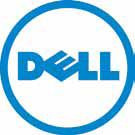
Getting started: Charter School had to create two new curriculum labs with 20 seats each to support SuccessMaker, one for the elementary grades and another for middle schoolers. The school’s existing setup of older Macs and CO Ws would not cut it, but the new Dell systems could handle the software. Coming up with two new media labs involved rewiring classrooms with outlets and network nodes.
New hardware also meant new relationships for the tech coordinator and for the school’s VAR. VCS was provided with a Pearson curriculum consultant and an IT consultant whom the school used throughout the year. There was dedicated customer support for its Dell hardware as well.
Professional development for teachers: Leigh Byron, head of school for Village Charter, found Pearson’s professionaldevelopment offerings one of the company’s strongest features (and explains much of the program’s significant costs). “You have to give the staff a little bit at a time, incrementally, because this software is so comprehensive,” he says. “If you take small steps, you can see the successes as they occur, and you’ll want to be even more successful.”
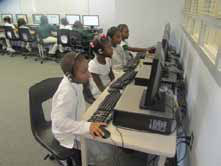
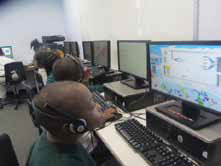
In action in the classroom: When students arrived back at school this past September, the addition of two new media labs stuffed with sleek desktops was more than just a pleasant surprise. The teachers, in turn, fed off the children’s energy in explaining to parents that they had rearranged schedules so students could get time on the computers but that they had tried not to sacrifice time spent in other disciplines (perhaps an impossible task). Even weeks later, the euphoria was sustained. Skeptics may point out that these initial reactions to fancy new gear, while natural, are due to nothing more than technology-as-novelty and do not address mastery of curriculum.
Halfway there: Six months into the Long Review process, the staff and students at VCS were immersed in the Pearson program. Students attended SuccessMaker labs more regularly than they did gym or art class. Teachers shared printouts of student scores along with report cards during parent-teacher conferences. Parents even chatted in the after-school pickup line about how their kids were doing.
Village students visit two Pearson SuccessMaker labs three times during the week. Their scores identify problems, which are addressed during regular classroom instruction.
Tools and ideas to transform education. Sign up below.

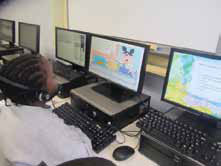
The biggest benefit administrators and teachers found was the ability to drill down and analyze students individually. Students used the program three days a week; each session was assessed. Teachers could then spot exactly where a child was facing a roadblock, go back into the regular classroom while the student was learning, and figure out how to move him or her forward. Yet some of the purported holistic benefits of SuccessMaker, such as its ability to interact with other back-office data systems, like PowerSchool, have yet to be realized at VCS.
At the school’s service: Byron credits both Pearson and Dell with having what could be termed preventive customer service. He recalls being advised by both companies, in the first stages of the implementation, about how to avoid pitfalls—things like having improperly wired labs and not understanding hardware requirements. Another key aspect of customer service that the Village Charter administration has discovered is that the members of the team behind each technology provider must have good relationships with each other as well as strong rapport with whichever third-party consultant the client uses.
SuccessMaker Reading and Math are interactive courses for grades K-8.
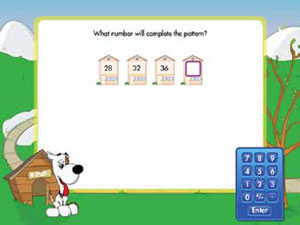
What about next year? For VCS, making the initial decision to accept a free test drive of a costly curriculum program was simple. Including the program and other hardware upgrades in next year’s school budget, which would add more than $100,000 to the bottom line, demanded serious contemplation.
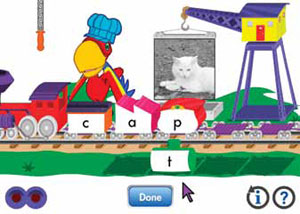
For Leigh Byron, what drove the school’s decision to continue on with the program was the results. “All but two grades have shown an overall net improvement,” he says. “We have many students who began this fall performing a year and a half below their grade-level proficiency that have caught up almost a whole year. That’s moving the needle in the right direction.”
Village Charter has also decided to extend its relationship with Dell. The board recently approved the purchase of Dell netbooks and tablets for a pilot program with grades one and five. Now that SuccessMaker has been implemented, the computers run only one program all day. The netbooks will be used to experiment with a one-to-one initiative based on a learningmanagement system created by Moodlerooms.
What went right? Literacy rates are improving. Byron’s presentation to the VC S board of directors showed increased rates of math and reading literacy in six of eight grades. Grades that showed the most progress also clocked the most time on the program. Teachers now use data to create logs for each student and monitor their progress. School leaders have weekly meetings in which they use the results of the program to discuss classroom strategy. Students are also more excited about learning.
What are the caveats? Improved scores recorded by the SuccessMaker program do not automatically correlate to improved test scores on standardized tests. The only way this, or any other, technology is going to work is if the entire school culture embraces it. “Without that,” Byron says, “you won’t get anything done.”
